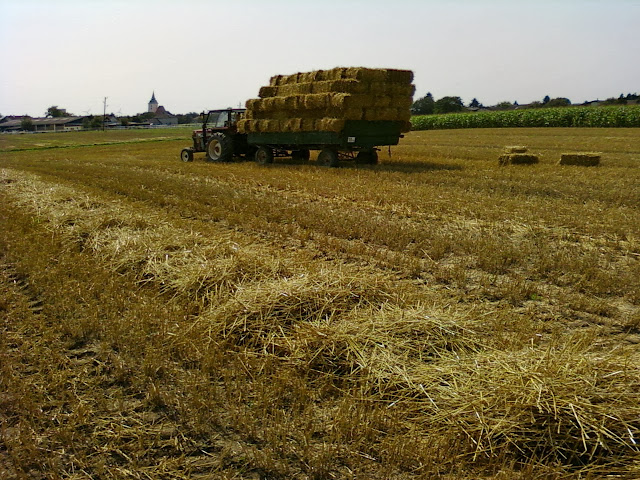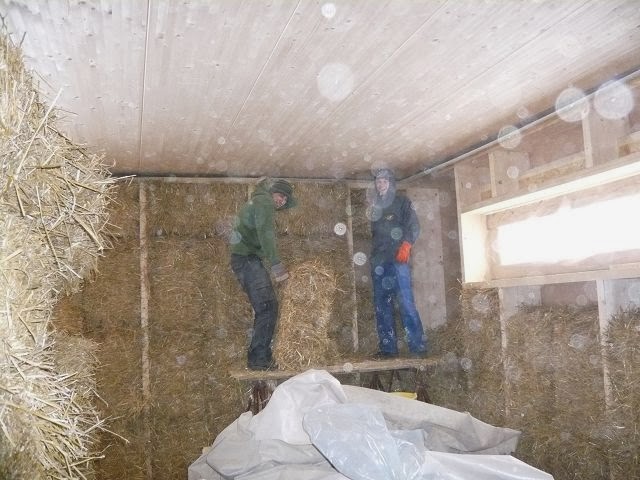 |
| Josef and Petra's beautiful home |
The house is built from natural materials using a timber frame with a ready-to-coat outer face made of soft fibre timber plates. The ceilings from the basement upwards are made of solid wood panels. This restricted the use of concrete solely to the construction of the basement.
The open timber frame inside the house was filled with 36cm thick straw bales. Excellent insulation! The straw bales were made at Josef's brother's farm 2km away and collected by the family. You can't get much more sustainable than that!
Here are some shots of the straw bale walls going up.
The walls were then covered by oriented strand board, an engineered wood particle board. Parts of the interior were covered by a clay/sand render with reeds as a filler.
Due to the quality of construction and the insulation from the strawbales, the only heating required is a wood pellet heater using sustainably sourced wood pellets. The pellet heater also supplies hot water during winter. For the remainder of the year hot water is mainly from 10 m3 of solar collectors connected to a 1000 litre buffer storage tank. Rainwater collected on the roof is used for watering the garden.
In the garden, Josef has started building retaining walls using traditional dry stone wall techniques.
 |
| the building materials |
 |
| the finished wall |
 |
| garden above the retaining wall |
In the background of the above picture you can see Josef's mulching lawn mower. When the grass is mowed this mulches the cut grass and leaves it on the ground. So the nutrients in the grass go back to the soil rather than being exported in a green waste bin. Josef says this mowing method has done a great job of building up the earthworm population ... and encouraging visits from blackbirds!
Isn't it a beautiful home?
As well as this write-up on our humble blog, Josef's house was also written up in a European Union publication "The Voices of Life: 20 years of getting things done".
It's wonderful to see so many great examples of pragmatic sustainability in one house. Josef, Petra and their children now have a comfortable home, made mostly from natural, sustainable materials with energy from renewable systems. Strawbale construction makes a lot of sense in Australia as well as Austria. Very good insulation for hot summers and drastically reduced heating requirements in winter. The large grain growing areas in Australia have millions of tonnes of straw after harvest. In Australia's mild climate a well-designed and built house needs very little heating. And the excellent insolation across much of Australia means that rooftop solar hot water systems can easily make much of the domestic hot water used. With rooftop photo-voltaics at $2/W it's cheaper to make electricity than buy it from the grid. Add some batteries - which are also dropping in price - and electricity from PV's can be stored for later use.











No comments:
Post a Comment